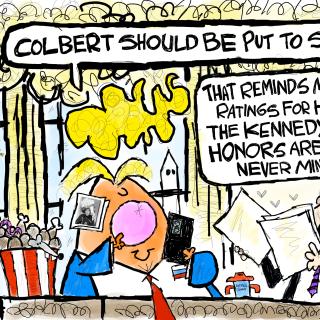Advertisement
Every so often, a celebrity like Shaleigh Woodley creates controversy by rejecting the “feminist” label. What’s less newsworthy is that lots of non-celebs do as well, even as they enjoy the freedoms the feminist movement brought about.
A likely explanation is that some women simply don’t realize how restrictive society was when it was divided into rigid “his” and “hers” categories. They also may not realize how hard it was to begin breaking down the patriarchal barriers that were holding an entire gender back.
The best antidote for this kind of historical obliviousness is to watch the entertaining and enlightening documentary She’s Beautiful When She’s Angry. Directed by Mary Dore, it’s a warts-and-all look at the early years of the modern feminist moment, roughly 1967-71.
Considering that’s a period of only four or five years, it’s astounding to recall how fast the feminist movement gained followers—and how quickly those followers began seeking change in every corner of society. And they did it all, one woman notes, without the benefit of the Internet, instead relying on mimeograph paper and the postal service to spread the word.
In some ways, feminism grew out of the era’s struggles to promote racial justice and oppose the Vietnam War. We learn that many female protesters began questioning their own lack of equality—not only in society at large but in the movements themselves. Groundbreaking books such as Betty Friedan’s The Feminine Mystique also helped to get the discussion started.
Clearly, though, the feminist movement owed its success to the pent-up frustrations of millions of women. When they began expressing those frustrations to each other, the film reveals, they realized that others felt the same way. It was an empowering discovery.
Dore lets the women who were involved tell their own stories, generally running contemporary interviews alongside images of their younger selves. Though Gloria Steinem is oddly absent except in a few seconds of archival footage, the flick includes a wide array of people and experiences.
Linda Frye Burnham speaks of the special challenges faced by African-American women, who were pressured to serve the cause of racial equality by having “babies for the revolution.” She and others also discuss the thorny issue of homosexuality.
Rita Mae Brown recalls that Friedan herself ordered her not to raise the topic of lesbianism for fear it would play into the popular misconception that feminists were man-haters. A group calling itself the Lavender Menace subsequently forced the issue by staging an ambush-style demonstration inside a feminist conference.
Outrageous behavior was often a valuable strategy, gaining media attention even as it earned derision from critics. A bra burning outside Atlantic City’s Miss America Pageant is just one of the examples included in the flick.
The one criticism that can be made about Dore’s documentary is that it takes on so many facets of early feminism that it eventually resembles an endless succession of issues. Then again, it’s merely reflecting the movement itself.
Employment opportunities, equal pay, sex, women’s health, child care, domestic violence, rape: The number of issues addressed by early feminists was staggering. And then there’s abortion, which was largely illegal in those pre-Roe v. Wade days, inspiring a gutsy Chicago group called the Jane Collective to venture outside the law.
Abortion, of course, is still a contentious issue, with state legislatures in Ohio and elsewhere constantly looking for ways to limit its availability. One of Dore’s interview subjects notes that, for all of the advances made by early feminists, freedom will always remain just over the horizon.
Rating: 4 stars (out of 5)
She’s Beautiful When She’s Angry (not rated) opens Friday (Jan. 23) at the Gateway Film Center in Columbus.



